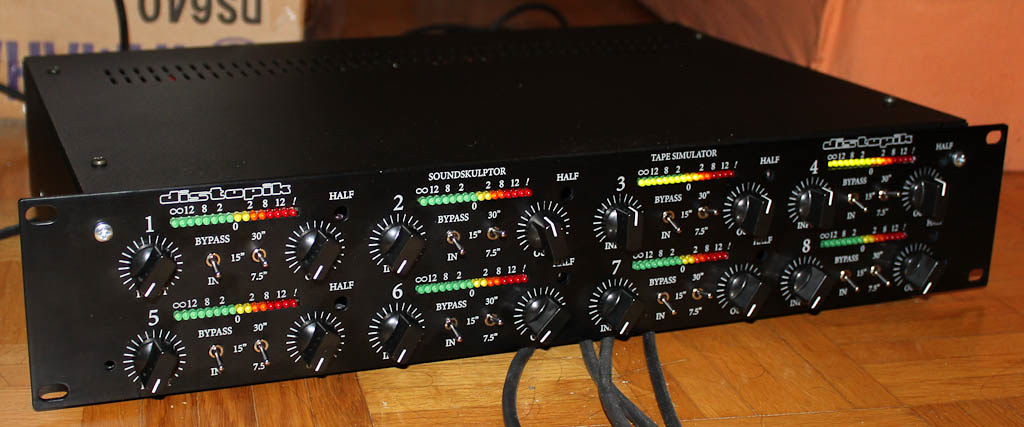Imo the stock sound of the in/out opamps are fine. I added the transformers to the whole unit without removing any of the other parts. If I would start from scratch, then this would certainly be an option. But I doubt how much difference it will make, it's a colour box after all.
In my unit for each channel I'm gonna make two rotary switches and an on/off for the low pass.
voicing = 9 steps, 3 decks
limiter (=diode) = 5 steps, 2 decks
low pass = SPDT
The voicing switch:
Deck one - Coil H1
1. H1 coil not connected
2. H1 coil connected to ground through an 24R resistor (less bass cut)
3. H1 coil connected to ground (linear saturation)
Deck two resistor R30
1. not connected
2. 120R
3. 200R (less treble cut in 7.5 ips)
4. 120R + 200R parallel
5. 4R (less bass cut in 30 ips)
Deck three negative feedback
1. off
2. 75KR between TP3 and D1
total voicings
1. 7.5 ips (bass boost, high cut)
2. 7.5 ips + 200R (bass boost, flat high)
3. 7.5 ips + H1+24R + 4R (slight bass boost, flat high)
4. 7.5 ips + H1+24R (slight bass cut, slight high boost)
5. 30 ips (bass cut)
6. 30 ips + 4R (flat !!!!!)
7. 15 ips (smile EQ)
8. 7.5 ips with 75K between TP3 and D1 (smile curve)
9. 15 ips + 200R (high boost)
Limiter:
1. D1+D2 off (for no diode clipping = more coil compression and more open sound)
2. D1 on with 2k2 resistor to ground (for assym. soft clipping)
3. D1 to ground (for assym clipping)
4. D1+D2 on with 2k2 resistor to ground (for symm soft clipping)
5. D1+D2 on (for sym clipping) (=stock)
On any stock STS you can cut the leg of the diode D1 and add a switch in between.
low pass switch
1. stock
2. 45R from crosspoint R38/R39 to R40.
this changes the low pass filter, but also adds loads of gain and gives it a more 'modern' overall voicing. Maybe I'll pair this with a change for resistor R42. At 1k6 it offers more gain, which could be a good setting for the stock low pass filter.

Maarten




















